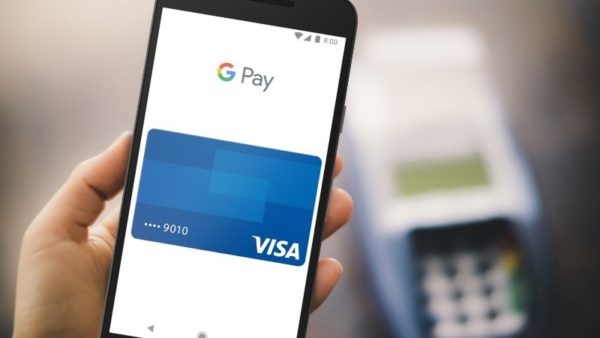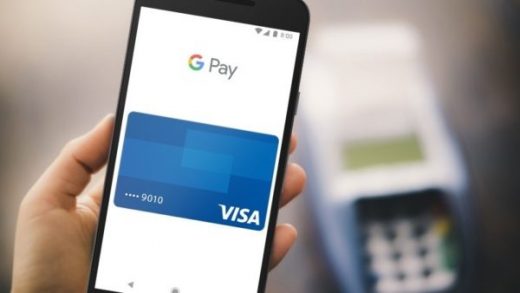Future of Electronic Payments in 2019
— April 22, 2019

2018 saw a number of significant innovations in the payments industry, with new regulations and emerging technologies contributing to the transformation in areas such as payments-channel integration, data protection, and digital identity.
Thanks to customers’ increasing demands for value-added services, the pace of this evolution looks set to be maintained over the next 12 months. As expected, businesses now demand continuous innovation of and adoption of emerging technologies in order to balance the market-demand pull with a healthy supply push. Based on activities in the industry in recent times, we analyze the top four trends that will define the electronic payment industry in 2019.
- Point of Sale (POS) Retail
The revolution in the digital payment system has been the most significant factor to disrupt the retail industry. Point of sale systems (POS Systems) are making inroads in the digital payment industry, with the promise of time-saving conveniences for merchants and restaurants alike. But retailers have so much to benefit from this continued transformation.
According to a recent analysis report, the Point of Sale (POS) industry will hit the $ 116 billion mark by 2025, with a compound annual growth rate (CAGR) of 9.9%. today, customers rightfully demand safe and unique shopping experiences while businesses depend on data to improve their decision-making process, which makes the point of sale system a bridge the gap between consumers and business owners.
The digital transformation also brings changes in the payment systems in the retail industry. As the number of mobile users continue to increase, cash and cash registers have been eliminated from the retail space, encouraging technology to create a portable POS solution for retailers. Even in countries like India where cash was the preferred mode of payment, consumers in the cities now prefer card payments to cash.
Many startups today have now introduced digital payment solutions which allow consumers pay from their smartphones while some other startups have introduced mobile point of sale (MPOS) technology, which means retailers can easily accept card payments and ensure a personalized and engaging shopping experience for their consumers. In the future, we can expect to see more retailers introducing the mobile point of sale solution so they can accept cash, cards, and mobile payments.
These new and emerging tech solutions have addressed the issues for small retailers who have the type of data that was only accessible for big retailers and enterprises. Perhaps the use of big data and analytics will be applied at every stage of the retail process in the future, to help determine trends, predict consumer demands for fast-selling products, and identify consumers who are likely to purchase these products.
Nowadays, retailers want their sales data or store transactions to be quickly accessible wherever they are – from their smartphones, tablet, or computer. This is where cloud technology comes in. An increasing number of pos systems are designed with integrated cloud solutions. In the future, we can expect to witness the adoption of cloud-based tech solutions by many small-medium-sized retailers.
- Mobile Payments
The effects of the tech innovations in the payments industry has continued to extend across the globe. Traditional payment methods like cash, checks and credit cards are now joined by new mobile-friendly transaction models. From PayPal and Google Pay to M-Pesa, Apple Pay, and other emerging e-payment platforms (including Twitter and Facebook’s social payment services), consumers can make their choice from a wide range of options.
Without doubt, smartphones now play a key role in the customer journey, and heavily influences the consumer experience. Innovations in the mobile payment industry are not only changing the way customers find and pay for products and services, they are also impacting the way these payments are accepted, secured, and facilitated by payment processors.
Mobile wallet payments are set to disrupt the norm in the payments industry. Currently one of the fastest growing trends in the mobile payments industry, mobile wallets are an amazing option because of the security, convenience, and speed they offer. While this mode of payment only accounted for $ 75 billion worth of transactions in 2016, analysts predict it will hit the $ 500 billion mark by 2020, representing a yearly growth rate of around 80% over a 5-year period.
Mobile wallet payments are especially appealing to consumers in part because they are simple to use. All a consumer needs to do is simply download a mobile wallet app for their mobile device, input their payment information, and use the mobile wallet as a payment method for their transaction. But aside its simplicity and convenience, the security features of mobile wallet payments will cause more and more consumers to adopt it in the future.
While traditional cards and cash remain viable in the payments industry, the continuous innovations and emerging technologies in the mobile payments industry means that consumers and merchants will increasingly seek out payment methods that reduce the need for physical forms of payment.
- Ecommerce Payments
More and more shoppers are ditching the brick-and-mortar stores for online shopping. The ecommerce industry is enjoying the innovations in the digital payment systems, and the growth in the industry is largely driven by the demand, convenience, and an increase in emerging checkout technologies.
The payment habits of today’s shopper continue to evolve. They no longer want to be restricted by traditional modes of payment, and with emerging technologies taking center stage, they do not have to be. As concerns surrounding the credibility of entering payment credentials in the online space continue to increase, today’s shopper is getting savvier about their payment choices.
Checkout technology in the ecommerce industry has allowed merchants to integrate alternative payment methods into their existing payment processes. Since consumers always prefer a hassle-free process, it is increasingly likely that merchants will try these new trends offered by ecommerce merchant processors, in the very near future. Rather than worry about upgrading outdated legacy systems, these alternative payment methods continually adapt to the needs of merchants to enable them satisfy the growing demands of today’s consumer.
- Crypto Payments
We have come a long way since Satoshi Nakamoto’s innovation in November 2008. Major advancements have been experienced in the capabilities of blockchain technology to ensure a better future of electronic payments through cryptocurrencies. When considering the landscape of digital or non-physical currencies today, consumers have raised a few concerns with using companies that process fiat payments. But cryptocurrencies offer a lot more – and this is why it is the future of electronic payments.
Cryptocurrencies solve the problem of privacy by providing better data security and making payment processes safer for users. Another problem the consumer faces with fiat payment processes is the issue of pending transactions. While some transactions can be completed on the same day or the next, other payments might take weeks to complete.
These prolonged “pending” transactions is far from helpful for someone looking to balance an account. As the future of electronic payments, cryptocurrencies can solve this problem by ensuring instantaneous transactions almost 100% of the time. In cases where crypto payments do not go through instantaneously, an unconfirmed transaction can be simply canceled without the fear of losing funds.
Crypto payments are especially needed by merchants as they offer new competition. Many traditional payment processing companies do not feel the need to reduce fees because merchants do not have a lot of choices. Rather than working with only a handful of payment options, merchants can now explore the thousands of alternatives cryptocurrencies offer. A growing number of businesses already accept Bitcoin as well as other crypto payment options alongside the traditional credit/debit card payments. In so doing, these merchants are able to decide what works best for themselves – and for their customer.
Payment Processing: The Evolution
Meeting the demands of today’s consumer in digital payments can be as exciting as it is challenging. As people get savvier, they want more speed, efficiency and better overall experience. As the digital payment space continues to evolve, the goal remains the same: to ensure consumers’ payment needs are addressed so effortlessly that they do not even notice it happened.
Digital & Social Articles on Business 2 Community
(21)


